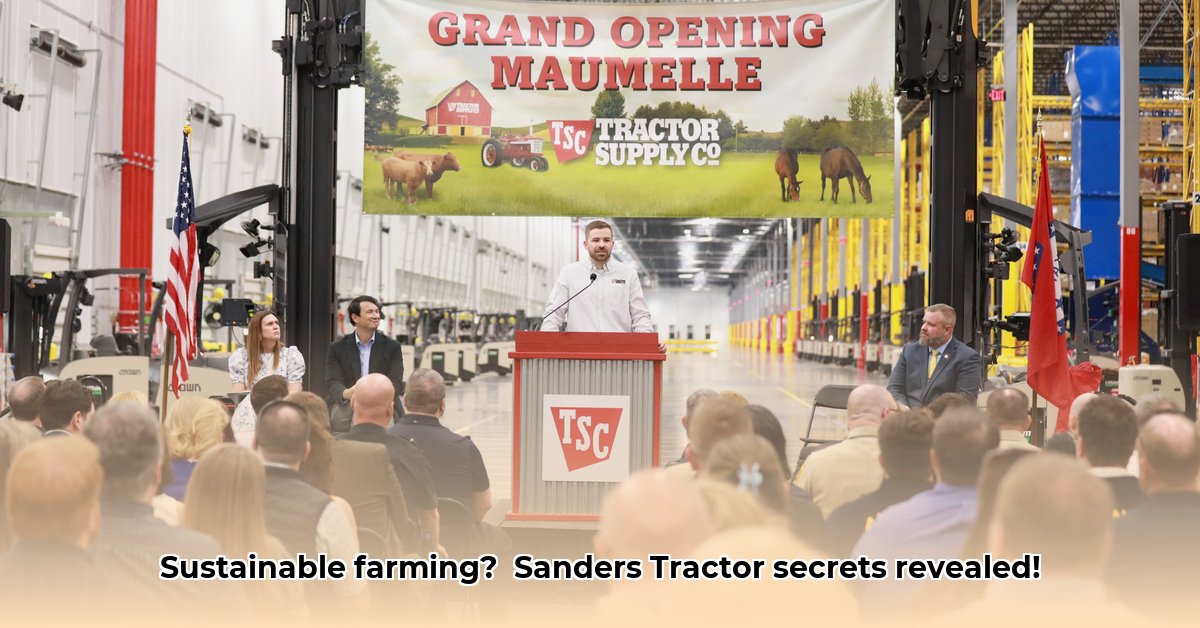
Assessing Your Current Tools: A Foundation for Sustainability
Before investing in new equipment, take stock of what you already have. A thorough inventory is the first step towards efficient and sustainable farming practices. This process helps identify tools needing repair, those that are obsolete, and those that are well-suited for continued use. For additional resources on farm tools, check out this helpful website.
Step 1: Conduct a Comprehensive Tool Inventory. Create a detailed list of all your farming tools. Include the tool's name, condition (excellent, good, fair, poor), and frequency of use. A spreadsheet or simple notebook works well.
Step 2: Prioritize Repair or Replacement. For tools in less-than-ideal condition, assess the cost of repair versus replacement. Small repairs may extend the tool's lifespan cost-effectively; however, significant repairs may outweigh the cost of a new, more efficient tool.
Step 3: Eliminate Redundancies and Unused Items. Identify tools that are rarely or never used. These take up valuable storage space and represent unused resources. Consider donating or selling them to local farmers or recycling centers. This decluttering process streamlines your workflow and creates space for essential equipment.
Choosing the Right Tools: Optimizing Efficiency and Sustainability
Selecting the appropriate tools is crucial for achieving both efficiency and environmental responsibility in your farming operation. Factors such as farm size, crop type, and soil conditions directly influence tool choices.
Consider the following:
Scale of Operations: Small-scale farms may benefit from manually operated tools, readily available at retailers like Sanders Tractor Supply, while larger operations may require more powerful, mechanized equipment.
Crop Requirements: The tools needed for growing vegetables will differ substantially from those needed for cultivating grains or managing livestock. Specific tools suited to particular crops will optimize yields and reduce waste.
Soil Type and Conditions: Different soil types demand varied approaches and equipment. Proper tool selection based on soil drainage, texture, and composition improves efficiency and minimizes soil degradation.
Sustainable Tool Selection: When purchasing new equipment, prioritize tools made from recycled materials or sustainably harvested resources, whenever possible. This reduces your environmental impact throughout the tool's lifecycle.
Sustainable Tool Choices: A Practical Framework
The following table outlines key features to consider when selecting farming tools for sustainability:
| Feature | Sustainable Choice | Considerations |
|---|---|---|
| Tool Lifespan | Select durable, long-lasting tools with a proven track record of reliability. | Higher initial investment is often offset by reduced replacement costs and downtime. |
| Material Sourcing | Prioritize tools made from recycled or sustainably harvested materials. | Availability may vary; explore options beyond Sanders Tractor Supply. |
| Energy Efficiency | Opt for tools that minimize fuel or electricity consumption. | Compare running costs of different tools before making a purchasing decision. |
| Maintainability | Choose tools that have readily available parts and are easy to repair. | Ease of maintenance reduces downtime and extends the tool's overall lifespan. |
Short-Term and Long-Term Strategies: A Balanced Approach
Sustainable farming requires a thoughtful, phased implementation strategy tailored to your specific needs and resources.
Short-Term Strategies (Smaller Operations):
- Optimize Existing Tools: Begin by enhancing the efficiency of your current tools through proper maintenance and repair. Source affordable replacement parts from local suppliers, including Sanders Tractor Supply, where applicable.
- Invest in Skill Development: Attend workshops or utilize online resources to learn optimal tool usage techniques. Proper techniques enhance efficiency and reduce wear and tear on your equipment.
Long-Term Strategies (Larger Operations):
- Precision Agriculture Technologies: Consider investments in advanced technologies like GPS-guided machinery or robotic tools for increased precision and efficiency.
- Planned Equipment Replacement: Implement a system for regularly assessing the lifespan of your equipment and planning for planned replacements to maximize return on investment.
Long-Term Goals (All Farmers):
- Support Sustainable Manufacturing: Favor suppliers committed to environmentally responsible manufacturing practices.
- Advocate for Policy Changes: Support government programs that promote sustainable farming equipment and methods.
Beyond the Tools: The Importance of Training and Skill Development
Even with the best tools, proper knowledge and skill are essential for efficient and sustainable farming. Underestimate the value of training at your own peril!
Utilize Available Resources: Invest time and effort in enhancing your farming techniques. Workshops and online resources can significantly improve your farming methods. Local agricultural extension services often provide valuable training and support.
Master Tool Usage: Proper tool usage maximizes efficiency, minimizes waste, and reduces equipment wear. Invest the time necessary to master techniques for all your farming equipment.
Choosing the right tools is fundamental to building a successful and sustainable farm. By combining careful planning, well-informed investment, and ongoing skill development, you will create an operation that thrives environmentally and economically. Your local Sanders Tractor Supply, along with other resources, can assist you in this journey.